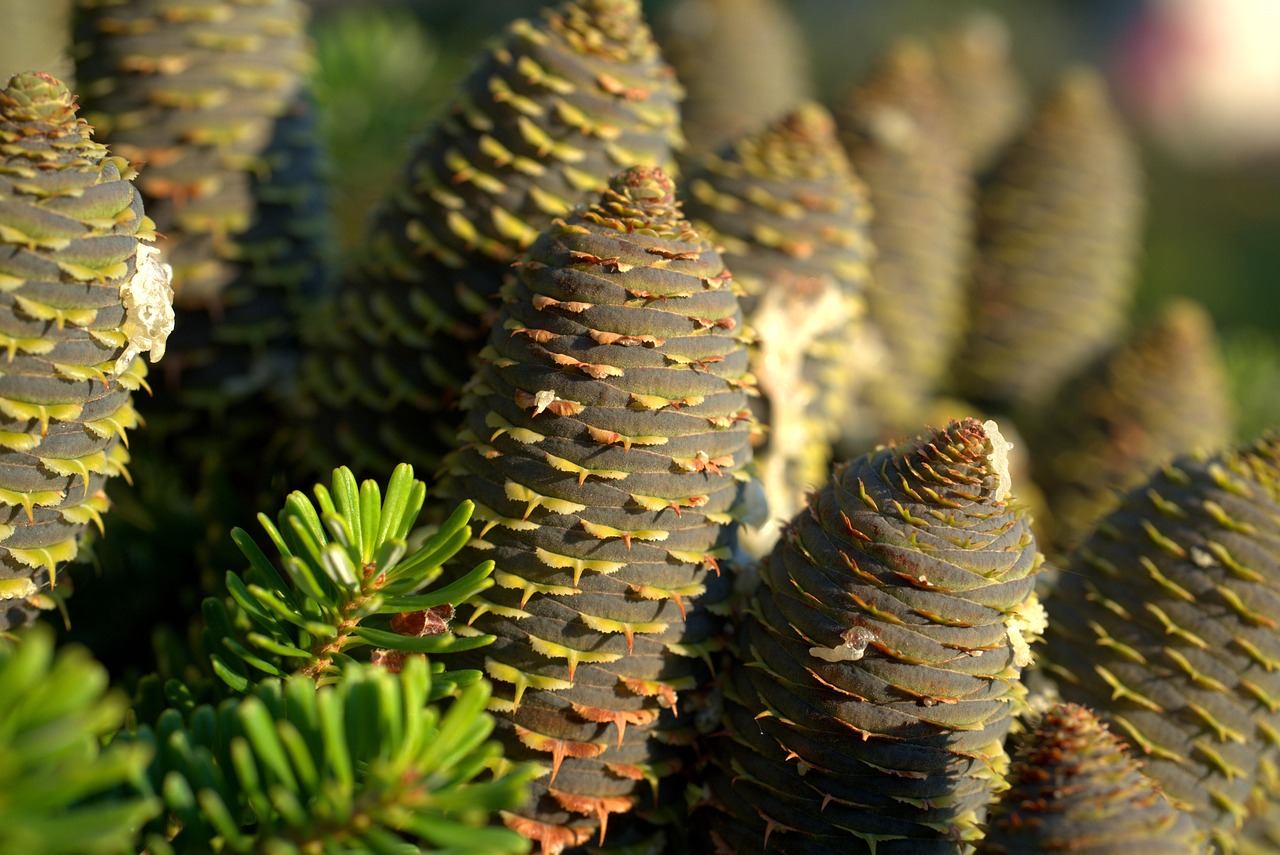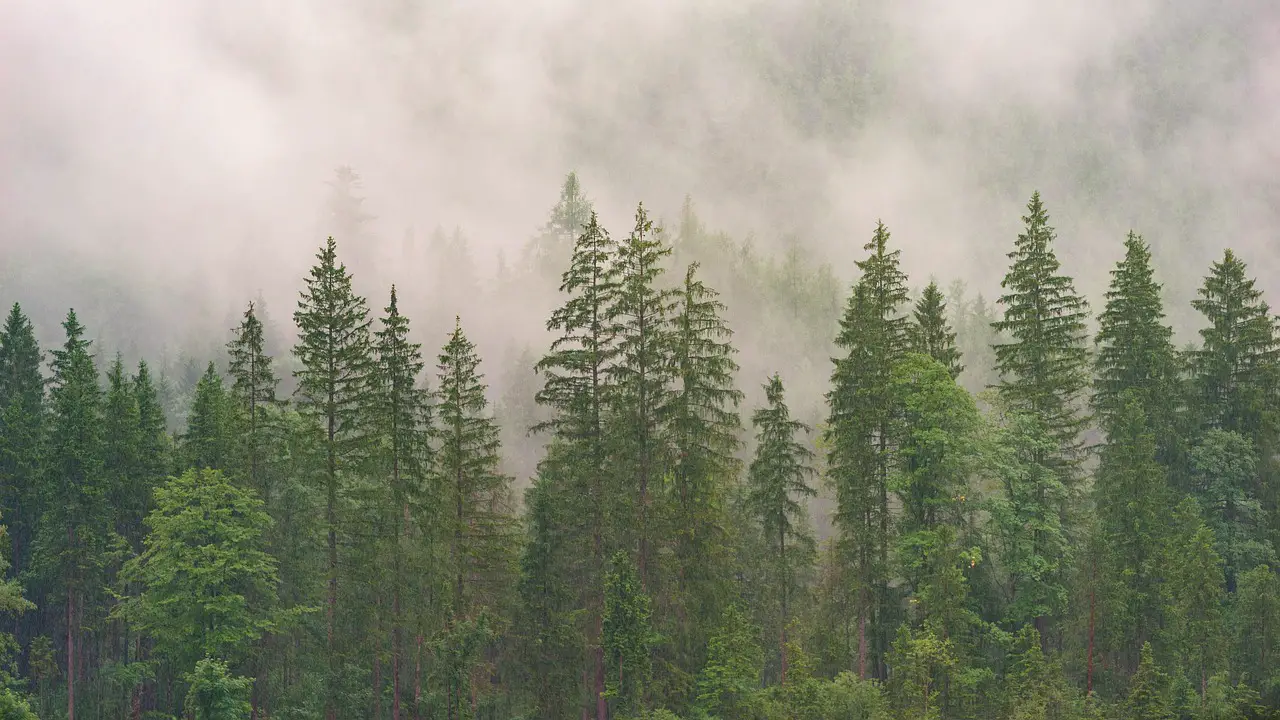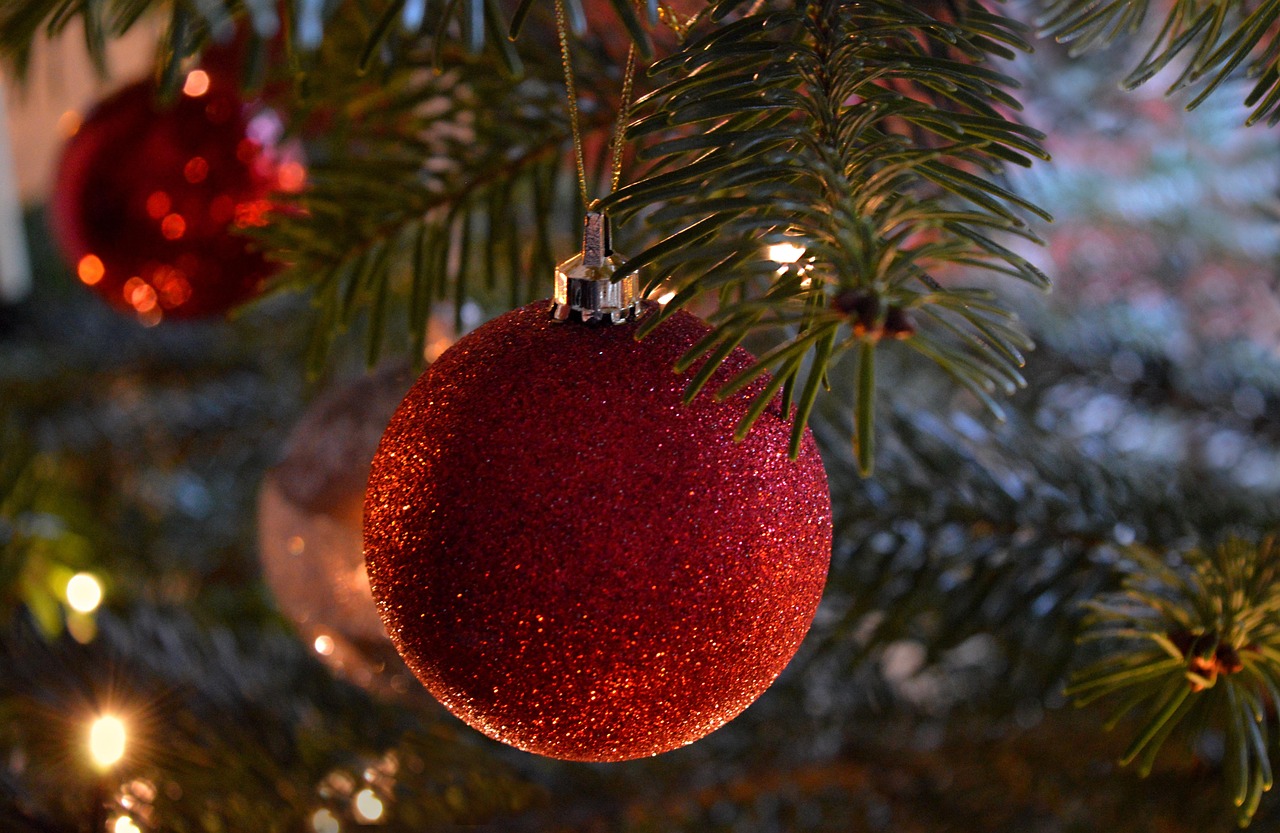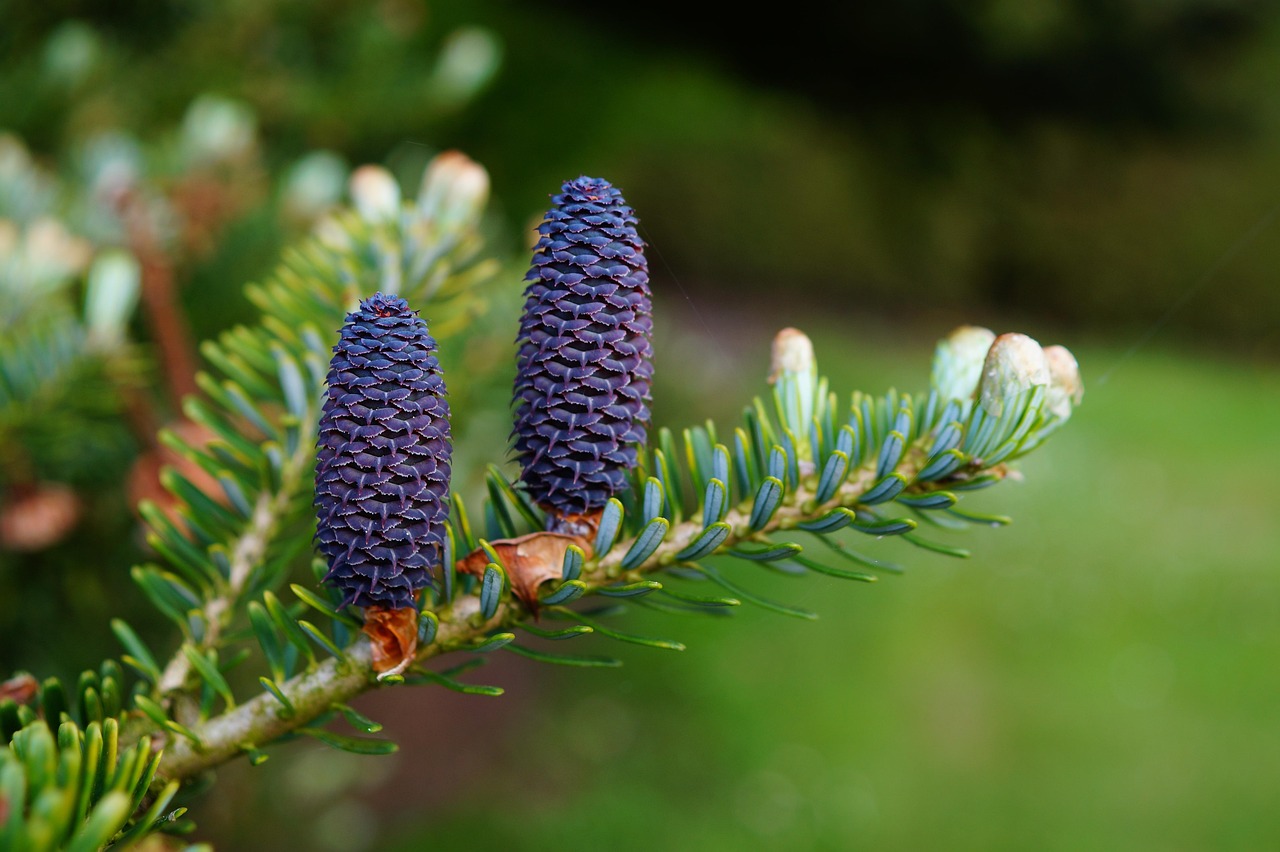The Fraser Fir tree typically grows at a moderate rate of about 12 to 18 inches per year under ideal conditions, making it a popular choice for Christmas tree farms due to its attractive shape and needle retention.
Fraser Fir (Abies fraseri) is one of the most sought-after Christmas tree species in North America. Its popularity stems from its dense foliage, pleasant fragrance, and excellent needle retention. The tree is native to the Appalachian Mountains, particularly thriving in regions with cool temperatures and adequate moisture. Understanding the growth rate of Fraser Fir trees is crucial for Christmas tree farmers, as it directly affects the time needed to cultivate trees for sale.

Factors influencing the growth rate of Fraser Fir trees include soil quality, sunlight exposure, and water availability. Farmers must pay close attention to these variables to optimize growth. The average height of a fully mature Fraser Fir can reach between 6 to 8 feet, which is ideal for the Christmas tree market.
Growth Conditions for Fraser Fir Trees
To achieve optimal growth rates, Fraser Fir trees require specific environmental conditions. Below are key factors that contribute to their healthy development:
- Soil Quality: Rich, well-drained soil is essential. Soils high in organic matter support better root development.
- Sunlight: Fraser Firs thrive in full sun to partial shade. Adequate sunlight helps in photosynthesis, which is vital for growth.
- Water: Consistent moisture is important. However, overwatering can be detrimental. A balance must be maintained.
- Temperature: Cool temperatures favor their growth. Extreme heat can slow down their development.
The following table summarizes the ideal growing conditions for Fraser Fir trees:

| Factor | Optimal Condition |
|---|---|
| Soil Type | Well-drained, loamy soil |
| pH Level | 5.5 to 6.5 |
| Sunlight | Full sun to partial shade |
| Watering Needs | Consistent moisture without saturation |
| Ideal Temperature | Cool climates, ideally between 60°F and 75°F |
Understanding these conditions will help farmers create an environment conducive to healthy tree growth. Additionally, managing pests and diseases is vital to ensure the trees grow without interruptions. Farmers should regularly inspect their trees and implement integrated pest management (IPM) strategies when necessary.
The growth cycle of Fraser Fir trees can be broken down into several stages: planting, establishment, early growth, and mature growth. Each stage requires different care and attention to maximize the growth rate.
Stages of Growth
Here is a brief overview of each stage of growth for Fraser Fir trees:

- Planting: This stage involves selecting healthy seedlings and planting them in prepared soil. Timing is critical; late spring or early fall is ideal.
- Establishment: During the first few years, the focus should be on root development. This stage lasts until the trees are well-established, often taking about 3 years.
- Early Growth: Once established, trees typically experience rapid growth. This stage can last from 4 to 7 years, depending on conditions.
- Mature Growth: After about 7 years, growth rates may stabilize. Trees continue to grow but at a slower pace as they approach maturity.
A proper understanding of these stages helps farmers plan their cultivation practices effectively. By ensuring that each phase receives the required care, farmers can significantly improve the overall health and growth rate of Fraser Fir trees in their Christmas tree farms.
Factors Affecting Fraser Fir Growth Rate
Several environmental and management factors can influence the growth rate of Fraser Fir trees on Christmas tree farms. Understanding these factors is essential to maximizing yield and ensuring healthy tree development. Below are some of the most significant factors that farmers should consider.
Soil Characteristics
The type and quality of soil play a crucial role in the growth of Fraser Fir trees. Here are some important characteristics of soil that affect growth:

- Soil Type: Well-drained, loamy soils are ideal for Fraser Firs. Sandy loam or clay loam soils provide good drainage while retaining sufficient moisture.
- Organic Matter: Soils rich in organic matter support healthy root systems and improve nutrient availability.
- Soil pH: The optimal soil pH for Fraser Fir is between 5.5 and 6.5. Regular soil testing can help farmers maintain the right acidity levels.
Climate and Weather Conditions
Fraser Fir trees thrive in cooler climates. The following climate-related factors can significantly impact their growth rates:
| Factor | Effect on Growth |
|---|---|
| Temperature | Optimal growth occurs in temperatures between 60°F and 75°F. Extreme heat can slow growth. |
| Precipitation | Adequate rainfall is necessary, with about 30 to 40 inches annually being ideal for Fraser Fir. |
| Frost | Late spring frosts can damage new growth and hinder overall development. |
Farmers should monitor weather patterns closely. Understanding seasonal variations can help them make informed decisions regarding irrigation and fertilization.
Pest and Disease Management
Pests and diseases pose significant threats to Fraser Fir growth. Managing these risks effectively is vital for maintaining healthy trees. Common pests include:
- Aphids: These small insects can weaken trees by feeding on sap.
- Spider Mites: These pests thrive in dry conditions and can cause needle drop.
- White Pine Weevil: This insect attacks the terminal leader of young trees, stunting growth.
Diseases such as root rot and needle blight can also affect growth rates. Regular monitoring and implementing integrated pest management (IPM) strategies can minimize damage. Farmers should consider applying fungicides or insecticides when necessary, but always following recommended guidelines to reduce environmental impact.
Nutrition and Fertilization
Nutrient availability is crucial for optimal Fraser Fir growth. Proper fertilization practices can enhance tree health and boost growth rates. Key nutrients to consider include:
- Nitrogen: Essential for overall growth and foliage development, nitrogen should be applied in moderation based on soil tests.
- Phosphorus: Important for root development, phosphorus helps establish a strong foundation for young trees.
- Potassium: This nutrient aids in overall plant health and disease resistance.
The timing and method of fertilization also matter. Farmers should apply fertilizers in early spring to support new growth. Slow-release fertilizers can be beneficial, providing a steady supply of nutrients over time.
Irrigation Practices
Irrigation is another critical factor that affects the growth rate of Fraser Fir trees. Maintaining adequate moisture levels is important, especially during dry spells. Here are some best practices for irrigation:
- Watering Schedule: Develop a consistent watering schedule based on rainfall and temperature conditions.
- Drip Irrigation: This method conserves water while delivering moisture directly to the root zone, promoting healthy growth.
- Monitoring Soil Moisture: Use soil moisture sensors to determine when irrigation is needed, ensuring trees receive adequate water without overwatering.
By focusing on these key factors, farmers can effectively manage the growth rate of Fraser Fir trees, leading to healthier trees ready for the Christmas season.
Harvesting Fraser Fir Trees
Harvesting Fraser Fir trees is a crucial step in the Christmas tree farming process. It requires careful planning and execution to ensure high-quality trees are delivered to customers. Understanding the right timing and methods for harvesting can significantly impact the overall success of a Christmas tree farm.
Timing for Harvesting
The timing of the harvest is essential for Fraser Fir trees. Typically, trees are ready for harvest between 7 to 12 years of age, depending on growing conditions and desired tree height. The ideal height for a Christmas tree is usually between 6 to 8 feet. Here are some factors that determine the right timing:
- Height: Trees should be at least 6 feet tall before harvest.
- Needle Retention: Harvest trees when they show optimal needle retention, which indicates they are healthy and ready.
- Market Demand: Consider the market demand for different sizes of trees. Early sales can benefit from early harvesting.
Harvesting Techniques
There are several techniques for harvesting Fraser Fir trees, each with its advantages. Farmers must choose the method that best suits their operation and resources. Common harvesting techniques include:
- Hand Cutting: Using a saw, workers cut the tree at the base. This method allows for careful selection and minimizes damage to surrounding trees.
- Mechanical Harvesting: Some farms use specialized equipment to cut and transport trees. This method is faster and can reduce labor costs but may result in more damage to the land.
- Baling: After cutting, trees can be baled using a baler machine. This technique makes transportation easier and protects the trees during transit.
No matter which method is chosen, it is essential to follow best practices to minimize damage to the trees and soil. Proper harvesting techniques help maintain the integrity of the farm for future growth cycles.
Post-Harvest Care
After harvesting Fraser Fir trees, proper care is necessary to maintain their quality until they reach consumers. Here are some post-harvest practices that farmers should consider:
Storage Conditions
The conditions in which harvested trees are stored can greatly affect their freshness and appeal. Key aspects include:
- Temperature: Store trees in a cool location to slow down respiration and maintain freshness.
- Humidity: Keeping humidity levels high can help prevent needle drop. Ideally, humidity should be around 90%.
- Avoiding Sunlight: Protect trees from direct sunlight to prevent drying out.
Watering Post-Harvest
Even after cutting, Fraser Fir trees benefit from water. Farmers can follow these steps:
- Cutting Fresh: Make a fresh cut at the base of the trunk just before placing the tree in water.
- Water Supply: Place harvested trees in water immediately to hydrate them.
- Monitoring Water Levels: Ensure that the water level remains consistent while in storage.
Marketing Fraser Fir Trees
Effective marketing strategies are essential for selling Fraser Fir trees successfully. Farmers should consider various approaches to attract customers and boost sales:
Branding and Promotion
A strong brand can help farmers stand out in a competitive market. Here are some tips for branding:
- Create a Unique Brand Name: A catchy name can make a lasting impression on potential customers.
- Use Social Media: Platforms like Facebook and Instagram can showcase your farm’s offerings and engage with customers.
- Host Events: Organize events such as tree-cutting days or holiday celebrations to draw families to your farm.
Selling Options
Diverse selling options can expand your customer base. Farmers should consider:
- On-Site Sales: Allow customers to cut their own trees or choose from pre-cut selections on the farm.
- Local Markets: Participate in local farmers’ markets or holiday fairs to reach a broader audience.
- Online Sales: Setting up an online store can cater to customers who prefer shopping from home.
By effectively managing the harvesting process, post-harvest care, and marketing strategies, farmers can maximize their profits and ensure a successful Christmas tree season.
Challenges in Fraser Fir Tree Farming
While Fraser Fir trees are popular for their beauty and fragrance, cultivating them comes with its own set of challenges. Farmers need to be prepared for various obstacles that can affect growth rates and overall tree quality.
Environmental Challenges
Environmental factors such as climate change and extreme weather patterns can significantly impact Fraser Fir farming. Here are some specific challenges:
- Drought: Prolonged periods without rain can stress trees and hinder growth. Farmers must implement effective irrigation strategies to combat this.
- Extreme Temperatures: Unseasonably warm winters or hot summers can lead to poor growth and increased susceptibility to pests and diseases.
- Soil Erosion: Heavy rainfall can cause soil erosion, depleting nutrients necessary for healthy tree development.
Pest Infestations
Pests can pose a significant threat to Fraser Fir trees. Effective pest management is crucial for maintaining tree health. Some common pests include:
- Scale Insects: These insects can weaken trees by sucking sap, leading to stunted growth.
- Bagworms: Known for their destructive feeding habits, bagworms can defoliate trees if not managed promptly.
- Needle Rust: This fungal disease can cause needle drop and impact the aesthetic appeal of the trees.
Regular monitoring and implementing integrated pest management (IPM) practices can help mitigate these risks, ensuring healthier trees.
Future Trends in Fraser Fir Farming
The Christmas tree industry is evolving, and farmers must stay ahead of the curve to remain competitive. Here are some emerging trends in Fraser Fir farming:
Sustainable Practices
Consumers are increasingly interested in sustainability. Farmers can adopt eco-friendly practices that not only benefit the environment but also attract customers. Some sustainable practices include:
- Organic Farming: Growing Fraser Firs without synthetic pesticides or fertilizers can appeal to health-conscious consumers.
- Recycling Plant Waste: Utilizing parts of the tree not sold as mulch or compost can reduce waste.
- Water Conservation: Implementing rainwater harvesting systems can promote sustainable water use.
Technological Innovations
Advancements in technology are also shaping the future of Fraser Fir farming. Incorporating technology can enhance productivity and efficiency. Key innovations include:
- Drones: Utilizing drones for aerial monitoring can help farmers assess tree health and detect pests early.
- Soil Sensors: These devices allow farmers to monitor soil moisture levels, ensuring optimal irrigation practices.
- E-commerce Platforms: Leveraging online sales channels can expand market reach and improve customer engagement.
Final Thoughts
The growth rate of Fraser Fir trees is influenced by various factors, including environmental conditions, soil quality, pest management, and proper harvesting techniques. By understanding and addressing these elements, Christmas tree farmers can optimize their operations for better yields and healthier trees.
As the industry evolves, adopting sustainable practices and embracing new technologies will become increasingly important. These strategies not only benefit the environment but also cater to consumer preferences for eco-friendly products. Ultimately, success in Fraser Fir farming hinges on a combination of traditional knowledge and modern innovations, ensuring that these beautiful trees continue to bring joy during the holiday season for years to come.
The journey of growing Fraser Firs is both challenging and rewarding. With careful planning and management, farmers can cultivate trees that meet market demands while contributing positively to the environment.
